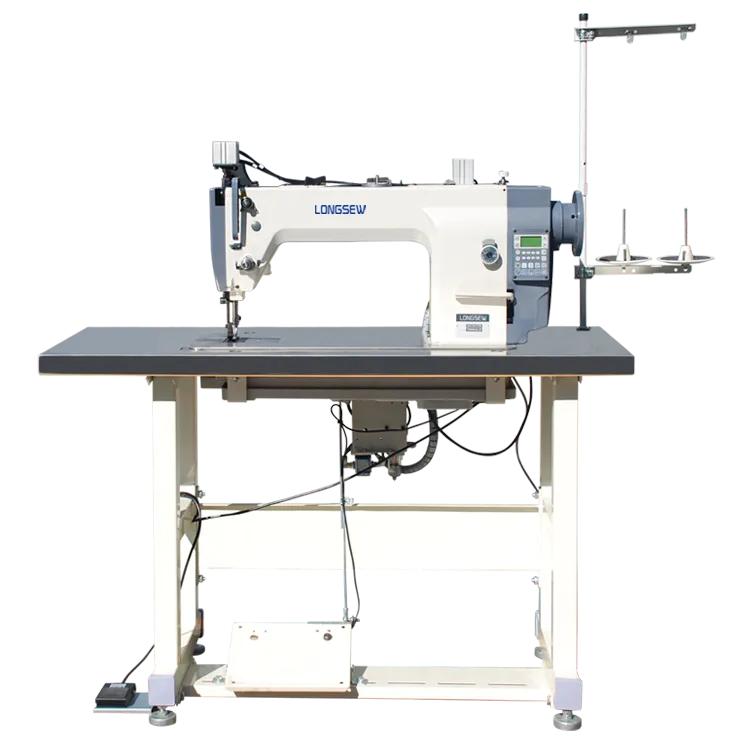Tips for Sewing Leather with a Regular Sewing Machine Effectively and Safely
Sewing Leather on a Regular Sewing Machine Tips and Techniques
Sewing leather can seem intimidating, especially if you're accustomed to working with lighter fabrics. However, with the right tools and techniques, you can successfully sew leather using a regular sewing machine. This article will provide you with valuable tips and insights to help you master the art of sewing leather.
Understanding Leather
Leather is a durable material with unique properties that require special consideration when sewing. It can be thick and heavy, often challenging to maneuver under a sewing machine foot. There are various types of leather you might encounter, including full-grain, top-grain, corrected-grain, and suede. Understanding these differences can inform your sewing approach as they have distinct textures and thicknesses.
Preparing Your Sewing Machine
Before you begin sewing leather, it’s essential to ensure that your sewing machine is equipped for the task. Here are a few modifications you might consider
1. Use the Right Needle A leather needle is specially designed with a wedge-shaped tip that allows it to pierce through the fibers without causing damage. If you don't have a leather needle, a heavy-duty needle can be a suitable alternative. Choose a needle size of 90/14 or 100/16 to handle thicker leather but avoid going too large, which can create unsightly holes.
2. Choose the Right Thread Polyester or nylon thread is often recommended for sewing leather due to their strength and flexibility. Avoid cotton thread, as it may break under tension. Use a thicker thread to deliver better durability, especially for projects like bags or belts.
3. Adjust Your Machine Settings Increase the stitch length when sewing leather, as this prevents the holes from becoming too prominent. A stitch length of approximately 3.0 to 4.0 mm works well for most leather projects. Additionally, consider adjusting the tension settings — testing on scrap pieces can help you find the right balance.
sewing leather on a regular sewing machine

Techniques for Sewing Leather
1. Use a Walking Foot A walking foot is an essential accessory for sewing leather, especially for thicker pieces. It helps feed the leather evenly, minimizing the risk of shifting and ensuring a straight seam.
2. Pinning and Clipping Traditional pins can create holes in leather and may shift during sewing. Instead, use fabric clips to hold your pieces together. If you do use pins, place them away from the seam line to prevent needle damage.
3. Cutting Leather When cutting leather, be precise. Use a rotary cutter or a sharp pair of scissors to get clean edges. It’s advisable to cut on a cutting mat to protect your blade and ensure straight lines.
4. Stitch Carefully Take your time when sewing leather. While a standard sewing machine can handle lighter leathers easily, thicker or multi-layered pieces may require a slower speed. Allow your machine to do the work without forcing the material through.
5. Finishing Edges To create a polished look, consider finishing your leather edges. You can use edge tools to round the corners and smooth the edges. Additionally, applying a product like edge dye can enhance aesthetics and prevent fraying.
Conclusion
Sewing leather on a regular sewing machine is definitely achievable with the right preparation and techniques. Remember that patience and practice are key; don't be discouraged by initial challenges, as each project is an opportunity to improve your skills. With these tips, you can successfully create beautiful leather items that are both functional and stylish. Whether it's a wallet, bag, or any other leather craft, let your creativity guide you as you embark on this exciting sewing journey!
-
Boost Production Efficiency with a Pattern Sewing MachineNewsAug.29,2025
-
Industrial Excellence with the Best Heavy Duty Sewing MachineNewsAug.29,2025
-
Precision and Power with the Best Pattern Sewing MachineNewsAug.29,2025
-
Reliable Bulk Packaging Starts With the Right FIBC Sewing MachineNewsAug.29,2025
-
Advanced Packaging Solutions: Elevate Productivity with Jumbo Bag Sewing Machine and Industrial Stitching EquipmentNewsAug.29,2025
-
High-Performance Solutions for Bulk Packaging: FIBC Sewing Machine and MoreNewsAug.29,2025
-
Maximize Efficiency with an Industrial Cylinder Arm Sewing MachineNewsAug.28,2025


























